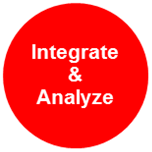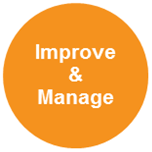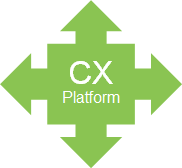
Running a modern customer experience (CX) program has come a long way in sophistication and effectiveness from the days of paper surveys, manual reporting, and delayed response to customer feedback. Today’s modern CX programs are integrated into the customer’s journey, leverage all available interaction channels, respond to customer input in real-time, and drive iterative improvement within an organization. Moreover, they’re based on pretty sophisticated technology platforms that bring it all together. In this post, I provide a high-level view of the anatomy of such a program and what functions it takes to run a world-class CX program within your company.
1. Design & Configure: the CX Program & Technology
This function is about engaging the customer at the right time, in the right channel, and with the right feedback/question(s). Further, it’s about designing a program that is suited to a company’s customer engagement model: the journey of interactions that a customer takes in the automotive industry is certainly different than that in financial services. Understanding that journey is key to designing an effective CX program that is integrated into the journey. Once the program and solution are designed, the underlying technology platform can be configured to support it.
2. Instrument & Measure: from Technology to Data
This function is about going from a configured technology platform to a rich source of data collected from customer interactions as they journey through their experience with a company. It’s about instrumenting that journey and collecting data implicitly and explicitlyabout the customer experience. I saw a great example of such instrumentation in a German airport recently: after going through the security checkpoint area, I was faced with three, large buttons I could easily push while carrying my bags and rushing to my gate.

The presses of these buttons from thousands of travelers through the airport daily can then be collected and fed into the technology platform. We now have data to work with.
3. Integrate & Analyze: from Data to Decisions
This function is about taking the customer feedback data and, first, integrating it with other operational data available from other systems. In the airport security example above, such operational data might include which staff members were working at the time, how many of them there were, which outbound flights were scheduled to leave 60-90 minutes later, and so on. All of this data can then be integrated and analyzed to reach conclusions and decisions about personnel and/or processes improvements. Admittedly, it takes expertise, in data sciences to make sense of the volumes of data collected, and in the company’s industry in order to know what decisions to take.
4. Improve & Manage: from Decisions to Outcomes
This function is about taking those conclusions and decisions and turning them into actions; after all, a CX program is only as successful its ability to affect customer experience outcomes. There’s a great deal of change management here, along with a measure of human oversight to ensure effective operation and closed-loop follow-through. As the program matures and lessons are learned, these can be fed back into the first function of Design & Configure to continuously improve the program and the customer experience with it.
5. CX Platform: Tying It All Together
Making all of this possible is a great deal of technology in the form of a platform capable ofsupporting all four functions. Today’s modern CX platforms are cloud-based, support multi-channel data collection, provide real-time data analysis and insight, and manage case- and action-planning activities. In the enterprise settings where these platforms are used, there is typically significant data integration with other enterprise and operational systems (e.g., CRM, ERP, online presence, etc.).
The CX space is quickly developing into a core discipline of any company with those that master it proving to be much more successful at acquiring, retaining, and growing their customer base.
This post was originally published on bassamsalem.com



